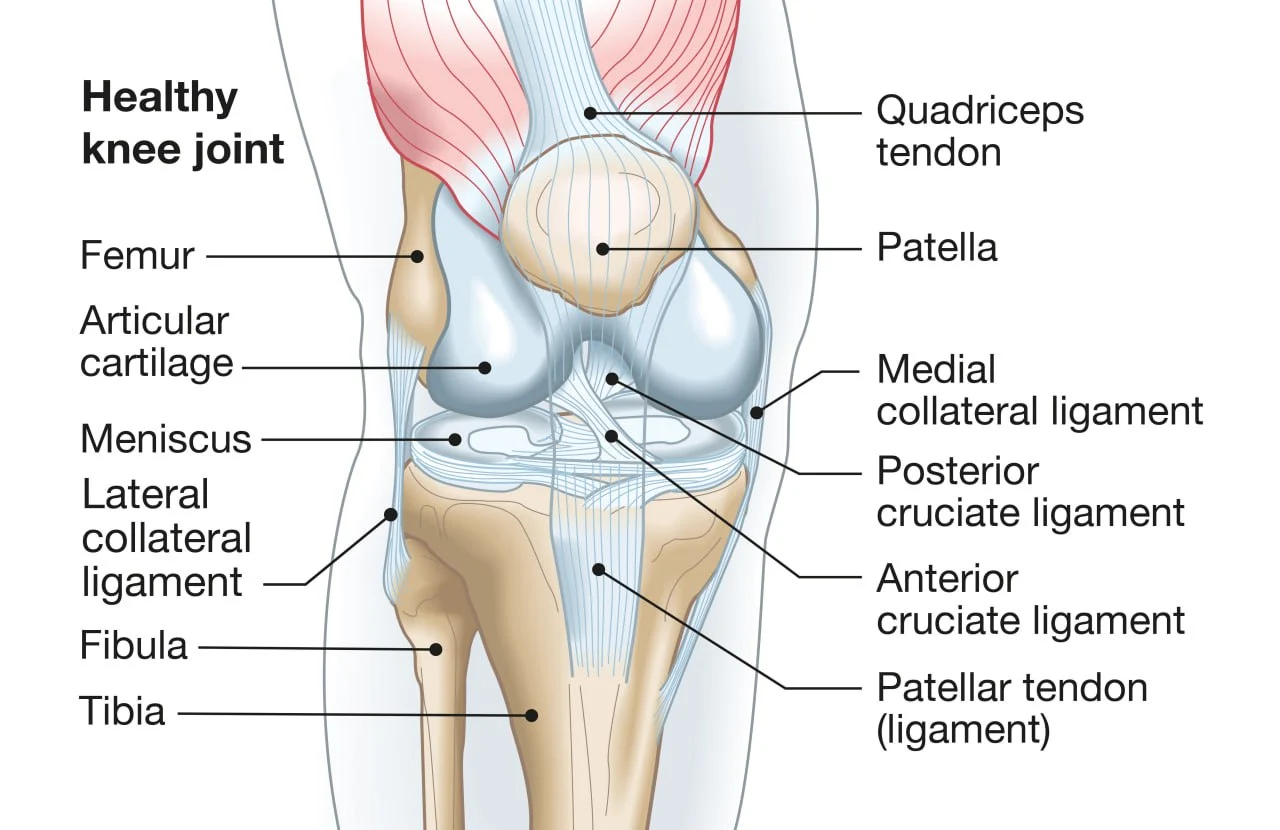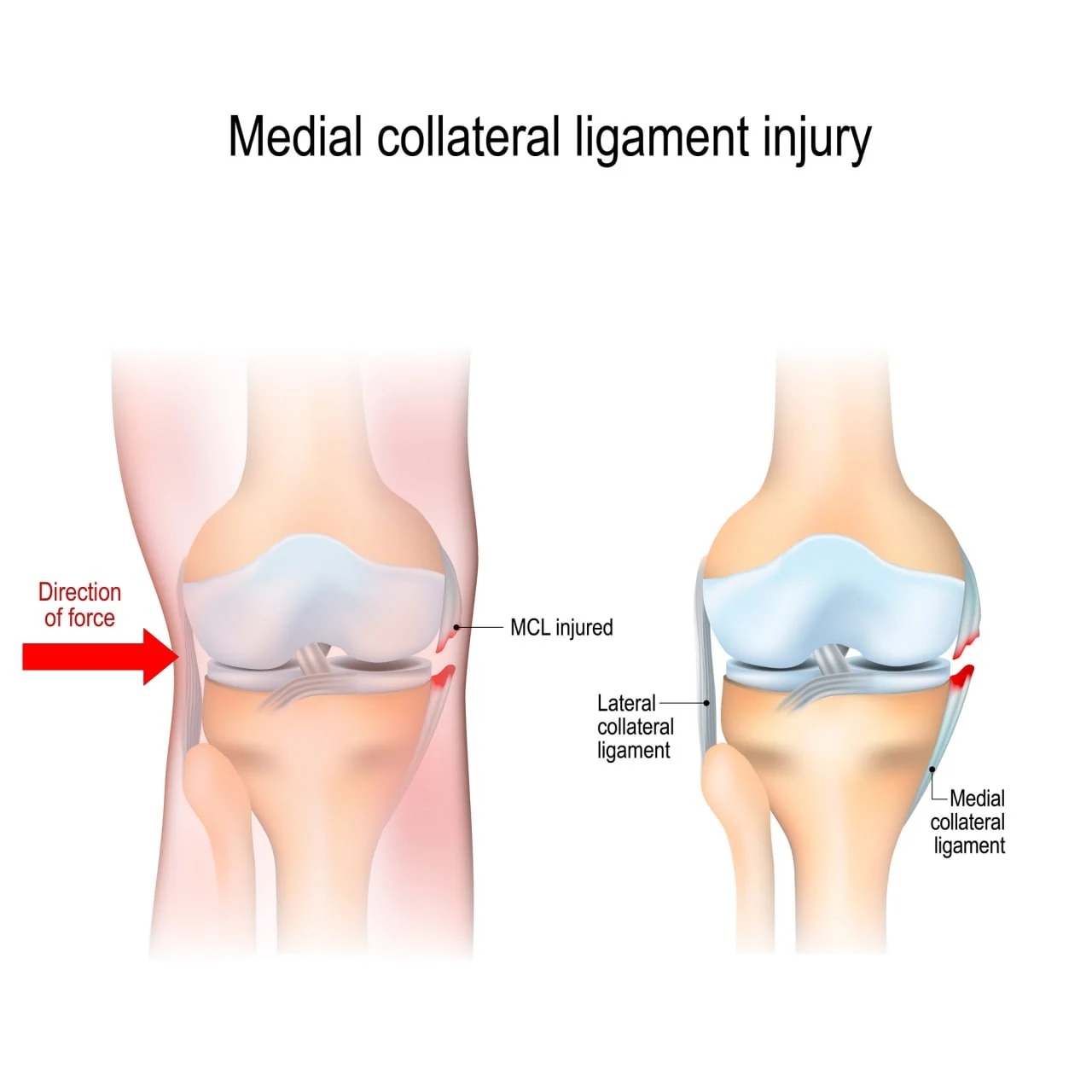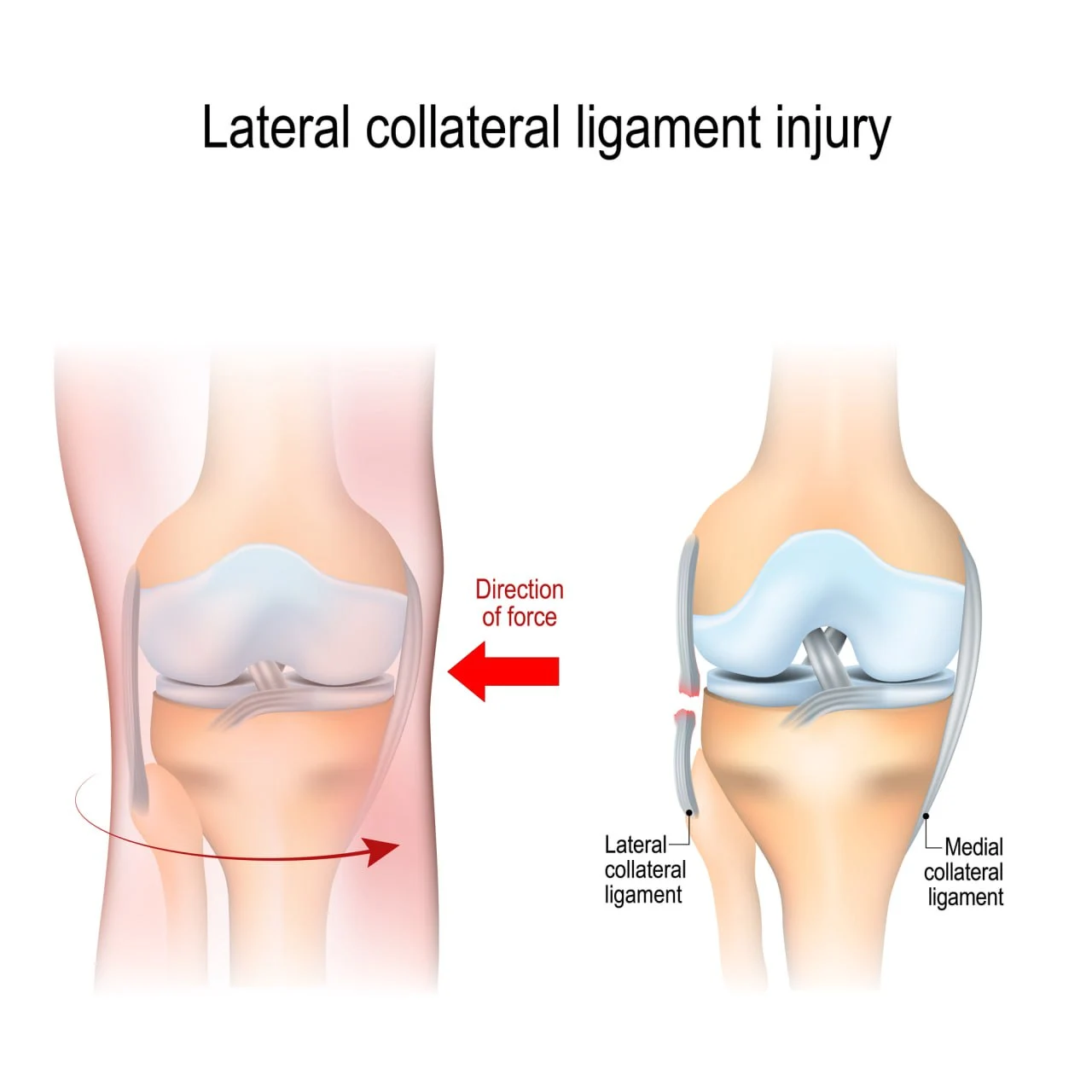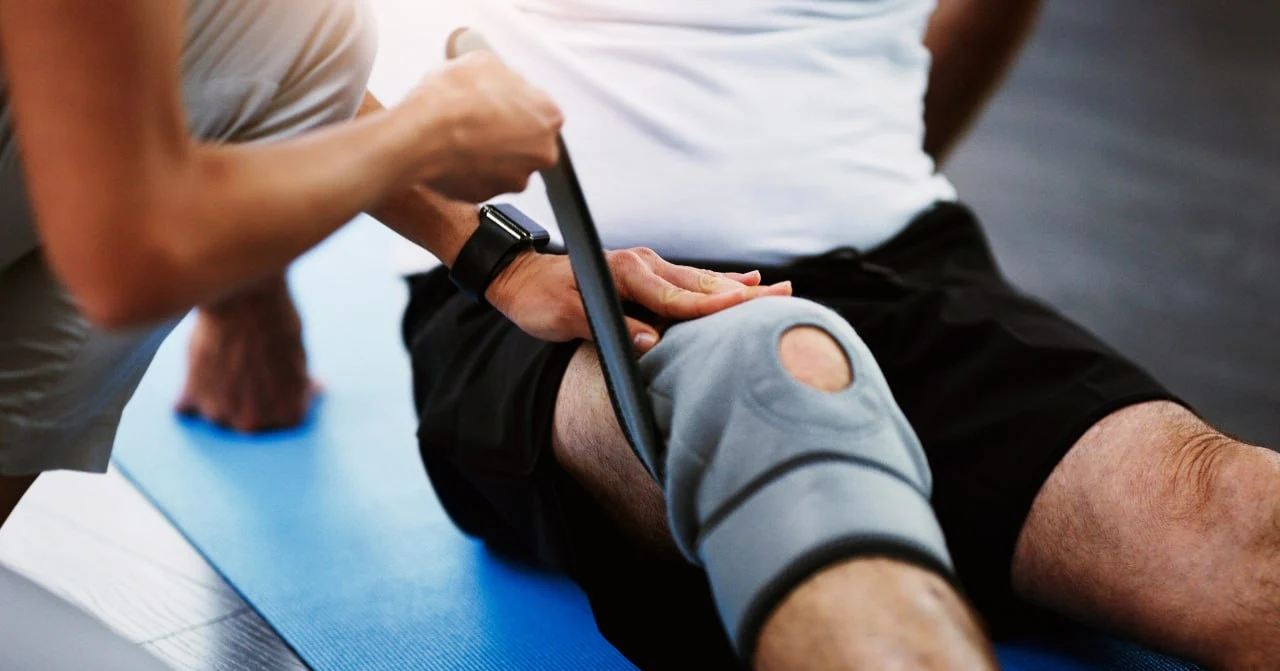Exploring The Role Of Collateral Ligaments
The knee joint is made up of three primary bones:
- Femur: Known as the thighbone.
- Tibia: Referred to as the shinbone.
- Patella: Commonly called the kneecap.
These bones are connected to muscles through tendons and to each other by ligaments. Ligaments are sturdy, flexible bands of fibrous tissue that stabilize the knee joint, ensuring proper movement and preventing dislocations.
The knee features four major ligaments: two collateral and two cruciate. Collateral ligaments are located on the sides of the knee and control side-to-side movement, helping prevent abnormal lateral motion.
Identifying Collateral Ligament Pain Symptoms
Collateral ligament injuries typically result from a strong impact to the inside or outside of the knee and are often seen in athletes engaged in sports involving rapid knee movements, such as skiing, basketball, football, and soccer.
If you sustain a collateral ligament injury, you may first hear a loud pop, which could signal a tear. Common symptoms of collateral ligament injuries include the following:
- Knee instability: A sensation of the knee “giving way” under weight.
- Audible sounds: Locking, catching, or clicking noises during movement.
- Reduced range of motion: Difficulty in fully bending or straightening the knee.
- Visible deformities: Noticeable changes in knee shape or alignment.
Recognizing these symptoms can help differentiate whether the injury involves the medial or lateral collateral ligament. Let’s delve into the specific signs associated with each type of injury.
Pain In The Medial Collateral Ligament
Common symptoms of MCL injuries include:
- Knee swelling: Fluid buildup around the injury site leads to swelling, which is part of the body’s inflammatory response. With an MCL injury, pain and swelling are typically felt on the inner side of the knee.
- Knee locking or catching: Torn ligaments can disrupt proper bone alignment during movement, causing a sensation of locking or catching. This can hinder your ability to fully bend or extend the knee.
- Inner joint pain and tenderness: MCL injuries often result in persistent inner knee pain. Along with a constant dull ache, you may experience tenderness when touching the affected area.
Pain In The Lateral Collateral Ligament
Here’s what you might experience:
- Pain on the outer side of the knee: A torn LCL often causes localized pain on the outer aspect of the knee. The intensity of this pain can vary, ranging from sharp to shooting, depending on the injury’s severity.
- Swelling: The body’s inflammatory response may lead to swelling, redness, and warmth around the injured area. These symptoms typically appear immediately after the injury and can persist for up to three months during the healing process.
- Tenderness: If you experience pain when touching the outer area of the knee, it may indicate a tear or overstretching of the LCL.
Common Injuries Leading To Collateral Ligament Pain
Pain in the collateral ligaments, particularly when accompanied by knee instability, often points to injuries such as sprains, tears, or ruptures. Understanding how different knee conditions affect ligament health is essential for an accurate diagnosis.
In addition to degenerative conditions like osteoarthritis, collateral ligament pain is commonly caused by traumatic injuries. These injuries typically result from excessive force impacting the inner or outer side of the knee, such as a heavy blow to the leg. Such force can push the knee sideways and cause unnatural twisting, overstretching the ligaments beyond their normal limits and potentially leading to tears.
Athletes, especially those involved in sports requiring sudden direction changes or contact sports like hockey and football, are more prone to collateral ligament injuries. Injuries to the MCL, in particular, often occur alongside damage to other knee ligaments or structures.
Common Types of Collateral Ligament Injuries
Sprains
Collateral ligament sprains occur when a ligament is stretched beyond its normal capacity or in an unnatural direction. This can happen due to forceful landings on the knee, sudden twists, or rapid directional changes. A sprain causes tears in the ligament’s collagen fibers, weakening the ligament and affecting its ability to stabilize the knee. The severity of a sprain can vary, with symptoms reflecting the extent of the ligament damage.
Tears
Ligament tears can result from sprains or develop due to factors such as excess weight or joint overuse. Persistent stress and inflammation can weaken ligaments, increasing the risk of tears. When a ligament tears, the tissue may become loose or completely detached from the knee bones (rupture), leading to significant knee instability and pain.
Diagnosing Approaches For Knee Collateral Ligament Pain
If you’re experiencing pain on the side of your knee, it could indicate a sprained or torn collateral ligament. Mild cases, such as micro-tears, often heal on their own within three to 12 weeks.
However, if you’re facing persistent or severe pain, it is important to consult a qualified medical professional. A specialist can evaluate the source of your pain and assess the extent of damage to the collateral ligaments.
What To Expect During The Diagnostic Process:
- Physical examination: Most ligament injuries are diagnosed through a comprehensive physical examination. Your doctor will review your symptoms, compare both knees, and perform tests to assess the range of motion and stability of your leg.
- Medical history: Your medical history is reviewed to determine if you are at risk of musculoskeletal or degenerative disorders, such as osteoarthritis, which may be associated with knee ligament injuries.
- X-rays: X-rays use electromagnetic energy to create images of the bones in your knee. While they primarily show bone structures, they can also indicate if a torn ligament has caused a piece of bone to be pulled off (avulsion).
- MRI (magnetic resonance imaging): MRI scans use radio frequencies to produce detailed images of both soft and hard tissues within the knee joint, including ligaments, tendons, and muscles. This imaging is particularly useful for detecting fractures and ruptured ligaments.
- Arthroscopy: Arthroscopy is a minimally invasive procedure where an arthroscope (a small camera) is inserted into the knee through a small incision. This allows the doctor to directly view the inside of the joint, diagnose injuries, and assess any degenerative conditions.
Classifying Collateral Ligament Injuries After Diagnosis
After receiving a diagnosis for your knee collateral ligament pain, your doctor may classify the injury based on its severity:
- Grade 1: This grade involves mild damage or micro-tears to the ligament. These injuries typically heal on their own within a few weeks and are characterized by swelling and pain without significant knee instability.
- Grade 2: Also known as “partial ligament tears,” grade 2 injuries involve moderate damage, with partial loosening of the ligament. Symptoms include pain, swelling, sensations of catching, and mild instability.
- Grade 3: The most severe, grade 3 injuries, or “complete ligament tears,” occur when the ligament is either fully torn off the bone or torn in half. This results in severe pain and significant knee instability. Grade 3 injuries may require surgical intervention to repair the torn ligament.
Common Approaches To Treating Collateral Ligament Pain
How NextPain Care Treats Collateral Ligament Pain
Knee collateral ligament pain can be incredibly challenging, affecting everyday activities like climbing stairs or walking a pet. For athletes, finding the right treatment is essential for a timely return to their sport and protecting their careers. At NextPain Care, we offer a comprehensive approach to managing knee pain through our 3-level system.
We begin with conservative, non-invasive treatments such as physical therapy and lifestyle modifications, and progress to advanced interventions like nerve blocks and other minimally invasive options if needed. Our personalized care plans are designed to address your unique needs, considering all aspects of your health and lifestyle to support your recovery and overall well-being.
Conditions We Address At NextPain Care
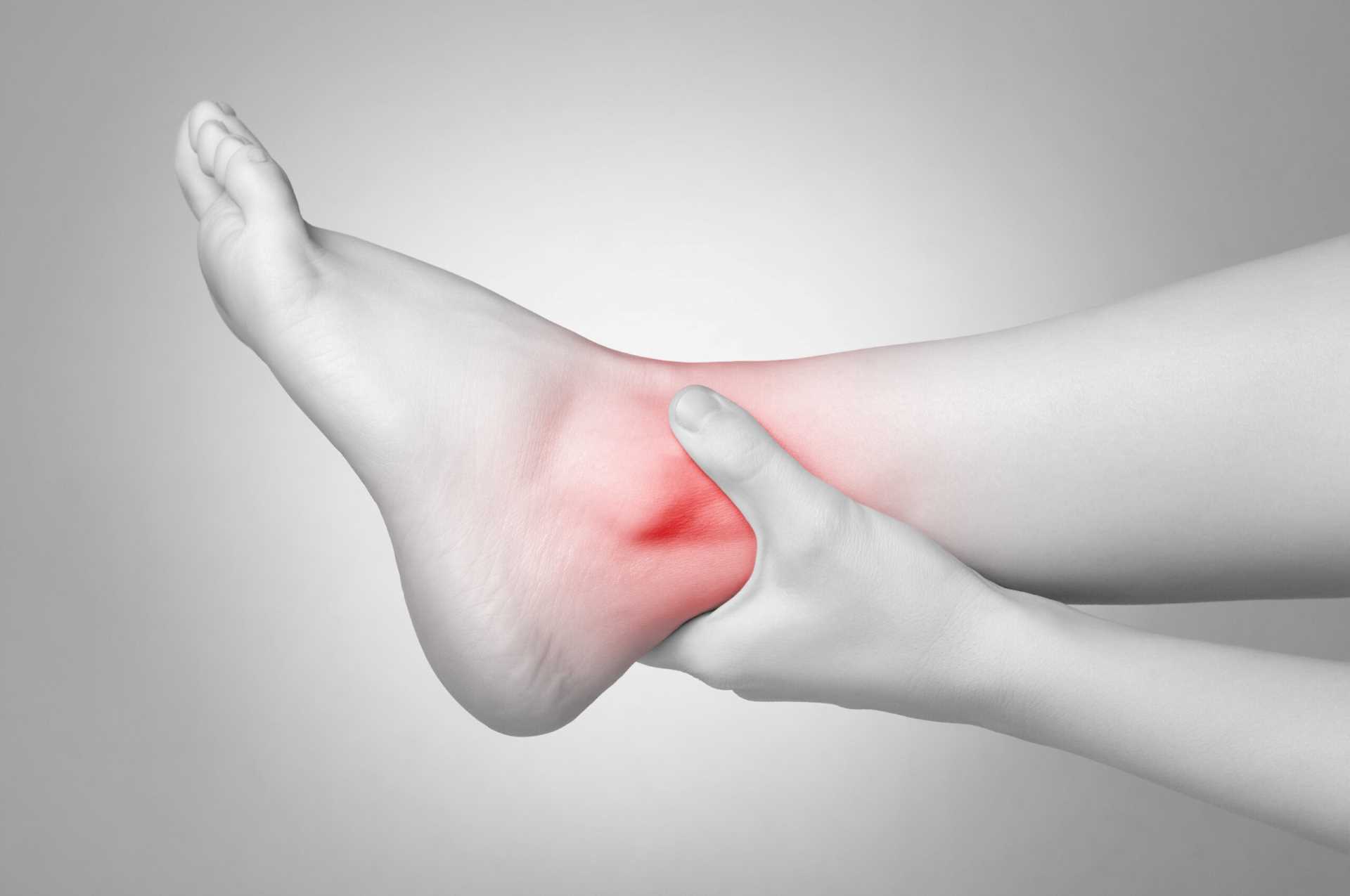
Ankle Sprain Pain Treatment
Ankle sprains often cause significant pain and can sometimes lead to long-term disability. Fortunately, with proper treatment, symptoms can be effectively managed. At NextPain Care, we deliver a comprehensive approach to pain...
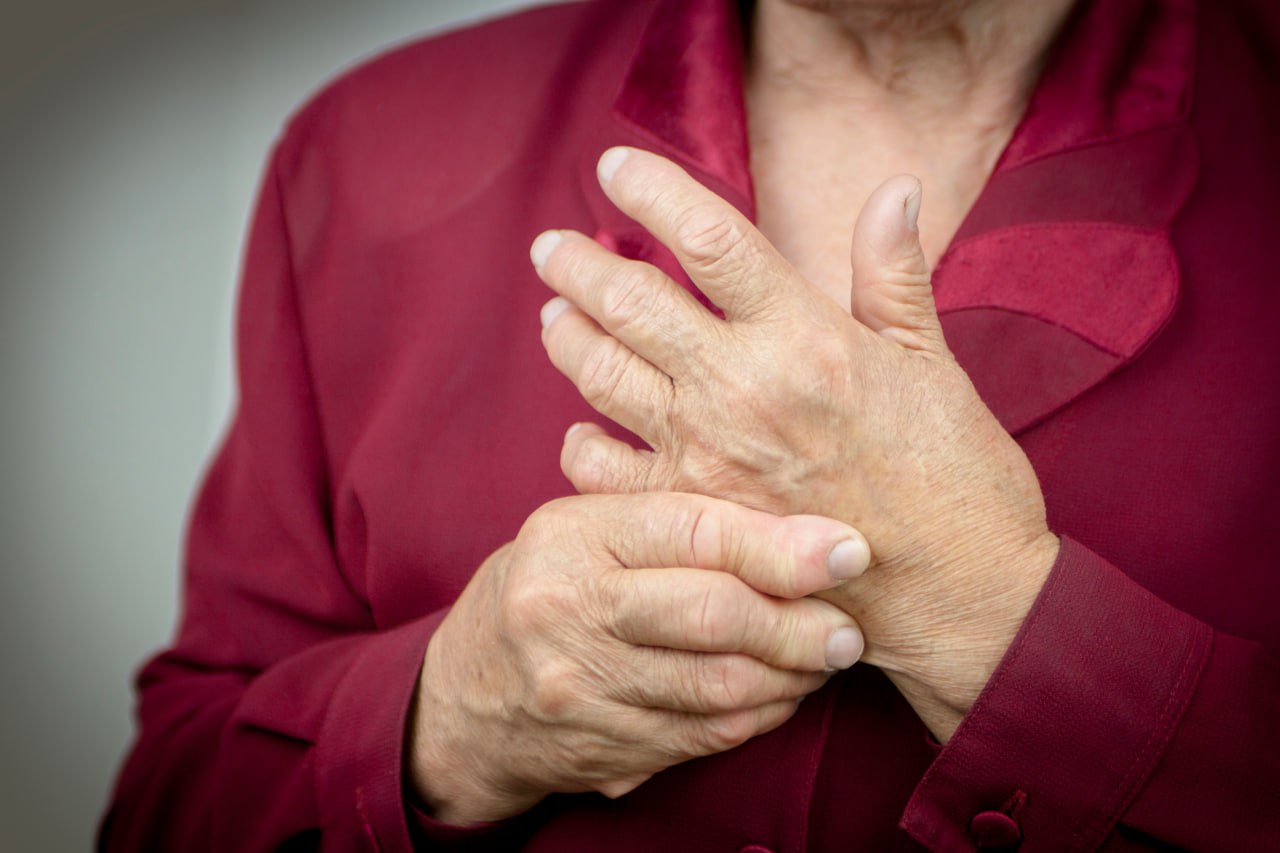
Rheumatoid Arthritis Pain Treatment
Rheumatoid arthritis can be a debilitating and painful condition that causes swelling, joint damage, and immobility. NextPain Care offers a comprehensive approach to treating the pain associated with rheumatoid arthritis and the condition itself. We aim to...

Joint Pain Treatment
Joint pain can be debilitating, making even simple daily tasks difficult for many people. At NextPain Care, we offer a comprehensive, multi-level approach to treatment. Our options range from conservative therapies to advanced surgical procedures, all aimed...
Treat Collateral Ligament Pain With Expertise
Chronic knee pain holding you back? Explore your options for managing pain with us.

